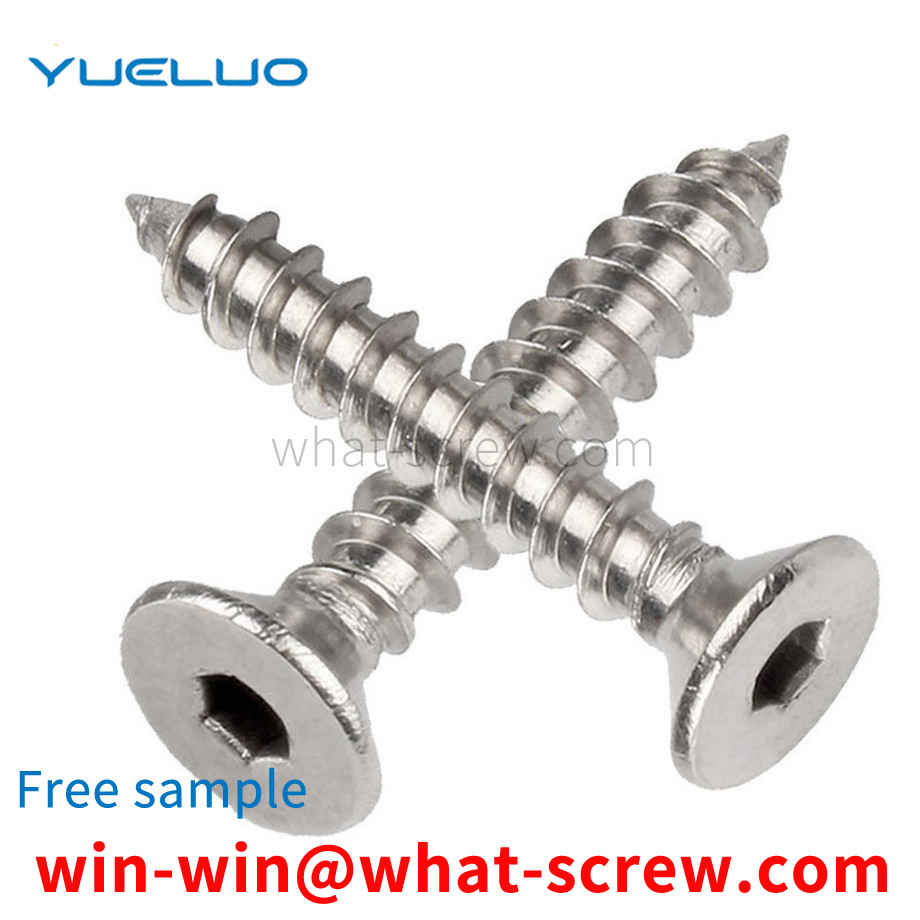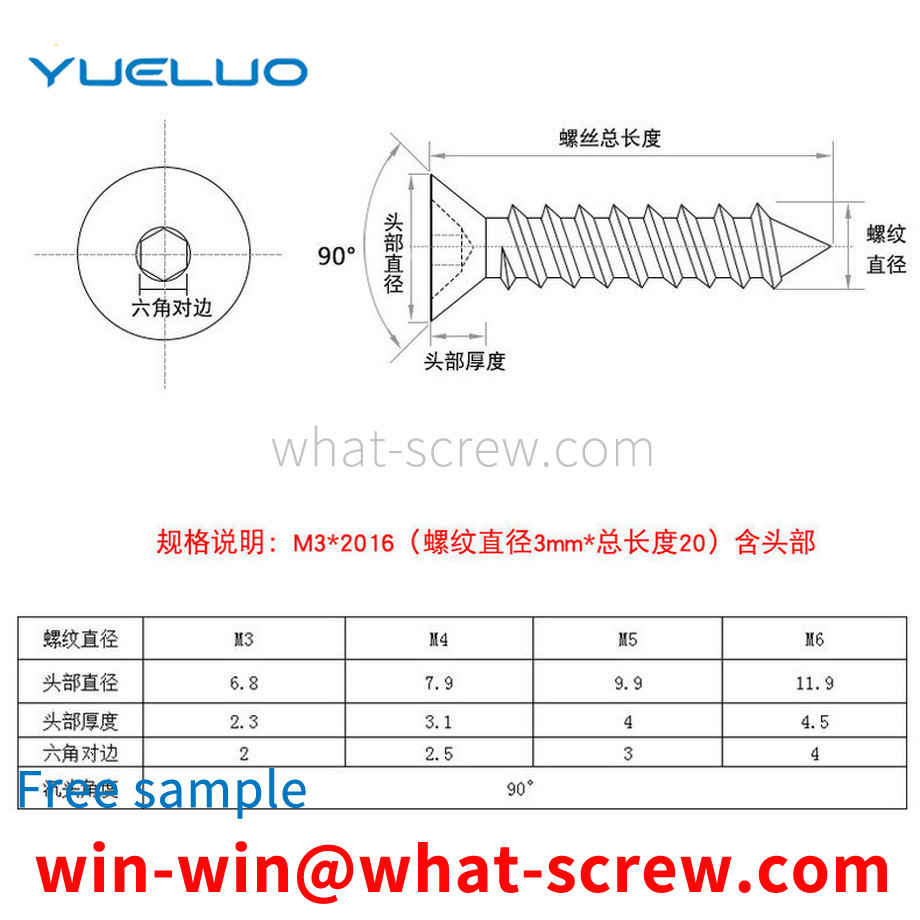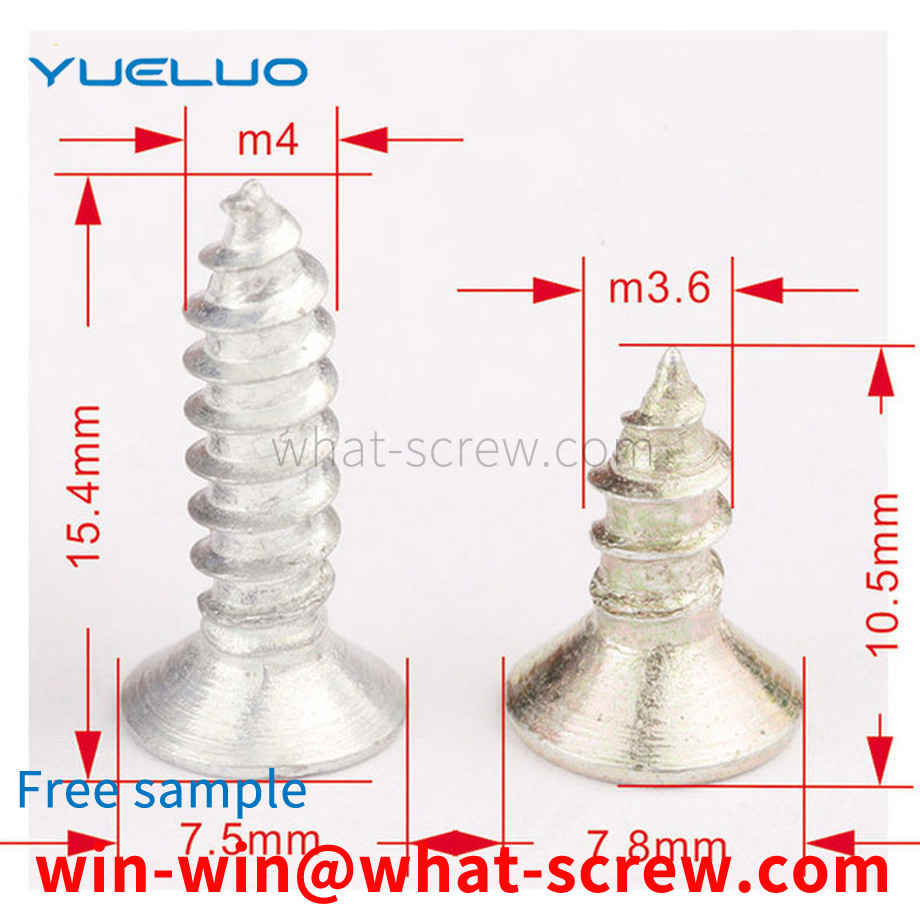What is the tolerance range of precision screws?
What is the tolerance range of precision screws?
Service Hotline
+86760-8787 8587We have more than ten years of experience in the production of screw industry, the main products are: hexagonal thickened nut, narrow-sided thick flat washer, hardware black hexagonal cap nut, 201 screw, extended black half-tooth screw, anti-thread nut, hollow rivet , Hexagon flange lock nut, carbon steel galvanized gasket, 201 stainless steel lock nut, hex socket head bolt with small teeth, ground washer, motherboard screw nut, double-ended stud, extended eyebolt and other fasteners, due to The materials and specifications of the products are different, and the prices are also different. Please contact us if you need it.


In another embodiment of Guangdong Yueluo Hardware Industry Co., Ltd., the discharge port of the vibrating plate 2 is matched with the screw receiving hole 35, and the screws can enter the screw receiving hole 35 through the discharge port after sorting and sorting in the vibrating plate 2. . Preferably, a guide rail 6 is provided between the discharge port of the vibrating plate 2 and the screw accommodating hole 35, and the screws enter the screw accommodating hole 46 from the discharge port through the guide rail 6. The slotting is carried out, which improves the efficiency and saves the labor cost.

At present, due to the installation position determined in the design process of the traditional thrust cylinder in China, the corresponding position of the piston rod and the clamping arm is fixed, and it is impossible to ensure that the workpiece can be clamped while the workpiece is thin. It is not conducive to the use of such products when clamping. Secondly, when the workpiece is assembled or welded, it not only needs to be tightened in a certain direction, but also needs to be positioned, so as to ensure the accuracy required for processing. When a workpiece is fixed in this way, it must be realized by adding a mechanism, which will increase the complexity of the system and bring inconvenience to installation and maintenance.


Fasteners are a general term for a type of mechanical parts used to fasten two or more parts (or components) to form a whole. Among them, self-fastening fasteners are widely used in the connection of sheet metal parts due to their advantages of fast installation, high efficiency, reliability, convenient assembly, high push, pull and torsion performance, wide range of applicable materials and serialization of specifications. middle. Nuts are the most widely used type of fasteners. With the continuous change and development of the scope of use and the use environment, more demands are put forward for nuts. In particular, some occasions require the nut to have the function of waterproof sealing. The existing methods of nut sealing and waterproofing generally have the following types:

Bolt: A type of fastener consisting of a head and a screw (a cylinder with an external thread), which needs to be matched with a nut to fasten and connect two parts with through holes. This form of connection is called a bolted connection. If the nut is unscrewed from the bolt, the two parts can be separated, so the bolt connection is a detachable connection. [1] Stud: A type of fastener that has no head and only has external threads on both ends. When connecting, one end of it must be screwed into the part with the internal threaded hole, the other end must pass through the part with the through hole, and then the nut must be screwed on, even if the two parts are tightly connected as a whole. This form of connection is called a stud connection, which is also a detachable connection. It is mainly used for occasions where one of the connected parts is thick, requires a compact structure, or is not suitable for bolt connection due to frequent disassembly. [1] Screw: It is also a type of fastener consisting of a head and a screw. It can be divided into three categories according to the purpose: machine screws, set screws and special-purpose screws. Machine screws are mainly used for a fastened connection between a part with a fixed threaded hole and a part with a through hole, without the need for nut matching (this connection form is called screw connection, which is also a detachable connection; it can also be Cooperate with the nut, it is used for the fast connection between two parts with through holes.) The set screw is mainly used to fix the relative position between the two parts. Special purpose screws, such as eyebolts, are used for hoisting parts. [1] Nuts: with internal threaded holes, generally in the shape of a flat hexagonal column, but also in a flat square column or flat cylindrical shape, with bolts, studs or machine screws, used to fasten and connect two parts, make it a whole. [1] 5. Self-tapping screw: Similar to machine screw, but the thread on the screw is a special thread for self-tapping screw. It is used to fasten and connect two thin metal components to make them a whole. Small holes need to be made in advance on the components. Due to the high hardness of this kind of screw, it can be directly screwed into the hole of the component, so that the Forming a corresponding internal thread [1] 6. Wood screw: It is also similar to a machine screw, but the thread on the screw is a special thread for wood screws, which can be directly screwed into wooden components (or parts) to connect a band through The metal (or non-metallic) part of the hole is fastened to a wooden member. This connection is also a detachable connection. [1] 7. Washers: A type of fastener with an oblate annular shape. It is placed between the supporting surface of the bolt, screw or nut and the surface of the connecting part, which increases the contact surface area of the connected parts, reduces the pressure per unit area and protects the surface of the connected parts from damage; another type of elastic washer, It can also play a role in preventing the nut from loosening. [1] 8. Retaining ring: It is installed in the shaft groove or shaft hole groove of the machine and equipment, and plays the role of preventing the parts on the shaft or the hole from moving left and right. [1] 9. Pins: mainly used for positioning the left and right parts, and some are also used for connecting parts, fixing parts, transmitting power or locking fasteners. [1] 10. Rivet: A type of fastener consisting of a head and a shank, which is used to fasten and connect two parts (or components) with holes to make them a whole. This form of connection is called rivet connection, or riveting for short. It is a non-removable link. Because if the two parts joined together are separated, the rivets on the parts must be broken. [1] 11. Components and connection pairs: Assemblies are a type of fasteners supplied in combination, such as a combination of a certain machine screw (or bolt, self-supplied screw) and a flat washer (or spring washer, lock washer); Connection pair refers to a type of fastener that is supplied by a combination of special bolts, nuts and washers, such as high-strength hexagon head bolt connection pairs for steel structures. [1] 12. Welding nail: a heterogeneous fastener composed of a nail rod and a nail head (or no nail head), which is fixed to a part (or component) by welding, so as to be connected with other parts. .

The above content is uploaded by Yueluo or the Internet. If there is any copyright issue, please contact [email protected].

What is the tolerance range of precision screws?

How to choose the right stainless steel screw manufacturer?

Why is there an R angle under the head of the hexagon head s...

We have more than ten years of production experience in the ...

We have more than ten years of production experience in the ...

We have more than ten years of experience in screw industry ...

We have more than ten years of experience in screw industry ...